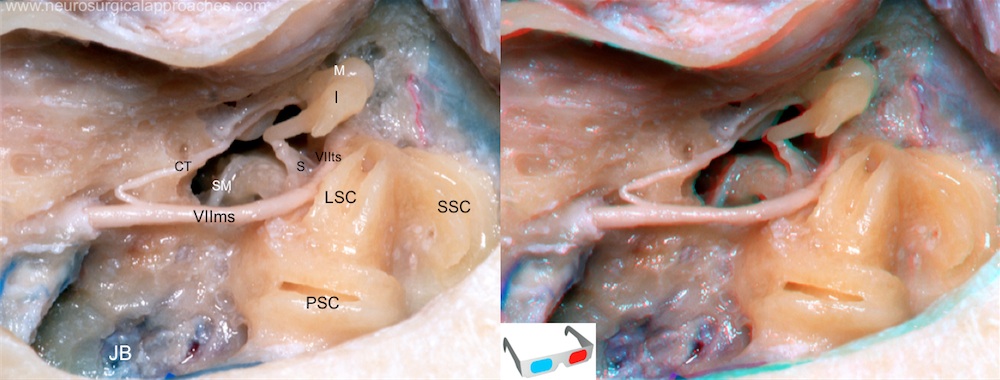Lateral semicircular canal
The horizontal semicircular canal (also known as the lateral semicircular canal).
The lateral or horizontal canal (external semicircular canal) is the shortest of the three canals. Movement of fluid within this canal corresponds to rotation of the head around a vertical axis (i.e. the neck), or in other words rotation in the transverse plane. This occurs, for example, when you turn your head to the left and right hand sides before crossing a road
It measures from 12 to 15 mm., and its arch is directed horizontally backward and laterally; thus each semicircular canal stands at right angles to the other two. Its ampullated end corresponds to the upper and lateral angle of the vestibule, just above the fenestra vestibuli, where it opens close to the ampullated end of the superior canal; its opposite end opens at the upper and back part of the vestibule. The lateral canal of one ear is very nearly in the same plane as that of the other; while the superior canal of one ear is nearly parallel to the posterior canal of the other.
CT: Chorda tympani; I: Incus; JB: Jugular bulb; LSC: Lateral semicircular canal; M: Malleus; PSC: Posterior semicircular canal; S: Stapes; SM: Stapedius muscle; SSC: Superior semicircular canal; VIIms: mastoid segment of VII cranial nerve; VIIts: tympanic segment of VII cranial nerve.
